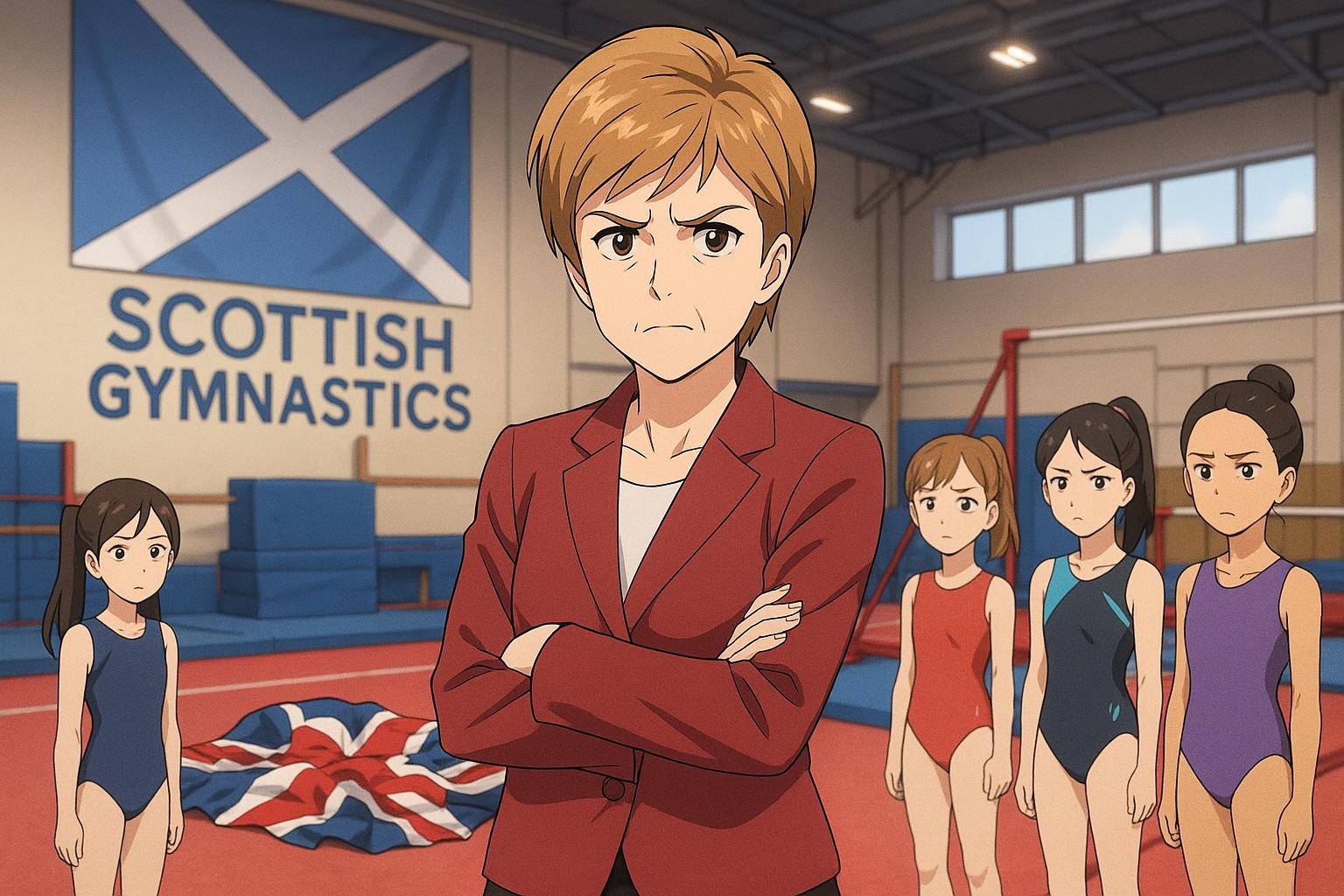The disappearance of a Union flag during a recent campaign visit by Nicola Sturgeon has sparked controversy and debate surrounding the symbolism of national identity in Scotland. The incident occurred at Hamilton Gymnastics Club, where Sturgeon was attending to support SNP candidate Katy Loudon for the upcoming by-election in the Hamilton, Larkhall and Stonehouse constituency.
As Sturgeon prepared for her appearance, a Union flag, prominently displayed in the club's main hall, quickly vanished from sight following a flurry of discussions between SNP advisors and the club management. Initially placed on the wall earlier in the morning, the flag was later found crumpled on the floor, raising questions about whether its removal was orchestrated by the SNP or merely a logistical oversight.
Political opponents were quick to condemn the incident. Deputy Scottish Labour leader Jackie Baillie remarked, “Nicola Sturgeon has gone from leading a referendum campaign to getting her flunkies to pull down the national flag at a gym in Hamilton.” Meanwhile, Rachael Hamilton, Deputy Scottish Conservative leader, referred to the incident as a reminder of the divisive policies that Sturgeon has cultivated during her leadership, highlighting the flag’s significance as a national symbol.
The timing of this incident is notable, occurring during a campaign characterised by heightened political tensions. The by-election has been portrayed as a critical test for the SNP, which has faced increased competition from both Labour and Reform UK, each vying for influence in a constituency that historically had strong SNP support. Sturgeon’s attendance at the event was met with mixed reactions, particularly as she sought to counter remarks made by Sir Keir Starmer regarding immigration, calling them "the dumbest of dumb politics."
This controversy isn’t the first time Sturgeon has faced scrutiny regarding her stance on national symbols. In previous instances, such as in January 2018, she refuted claims that she had banned the Union flag from flying on public buildings in Scotland, asserting that these allegations were unfounded and mere "fake news." Sturgeon explained that since 2010, the Royal Banner of Scotland had been prominently displayed during royal events without any official directive altering the protocol for the Union flag.
Adding context, Hamilton Gymnastics Club has made significant strides in recent years. Becoming the first Scottish gymnastics club to exceed 1,000 members in 2015, it has continued to play a vital role in the community, culminating in a recent £108,401 award from the sportscotland Sport Facilities Fund. This funding aims to expand the club's capabilities to accommodate a waiting list of 250 aspiring gymnasts—an impressive reflection of its growing popularity and the commitment of its dedicated coaching staff.
As Scotland approaches a potentially transformative Holyrood election in the coming year, the conversation surrounding national identity, symbolised by incidents such as the Union flag’s disappearance, will likely continue to resonate with voters. For many, these issues encapsulate the broader narrative of Scotland’s political landscape, intertwining local pride with national sentiment.
The hard-fought battle for public perception continues, with figures like Sturgeon aiming to assert their vision for Scotland's future amidst a kaleidoscope of differing political ideologies. Yet, as the Hamilton by-election unfolds, the dynamics of identity politics, the legacy of leadership, and the symbols that represent them remain paramount in shaping the discourse.
Reference Map
- Paragraphs 1, 2, 4
- Paragraphs 1, 6
- Paragraph 5
- Paragraphs 2, 4
- Paragraph 4
- Paragraph 7
- Paragraph 4
Source: Noah Wire Services
